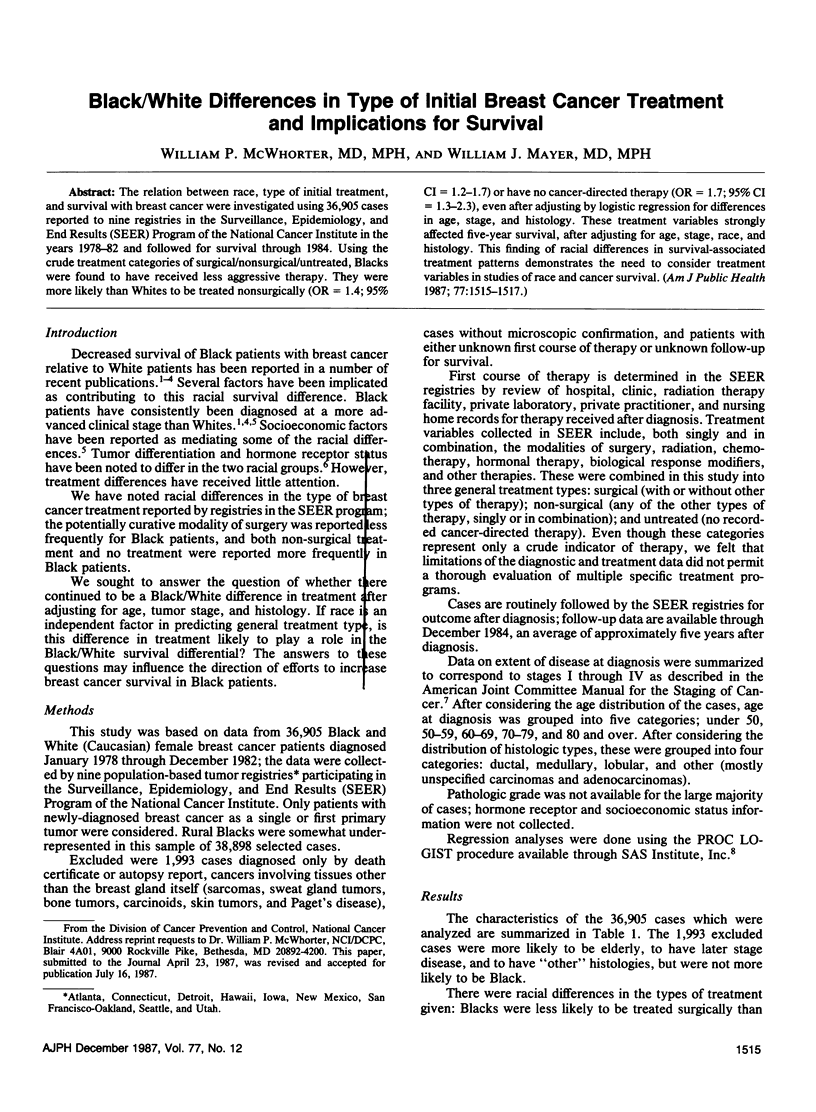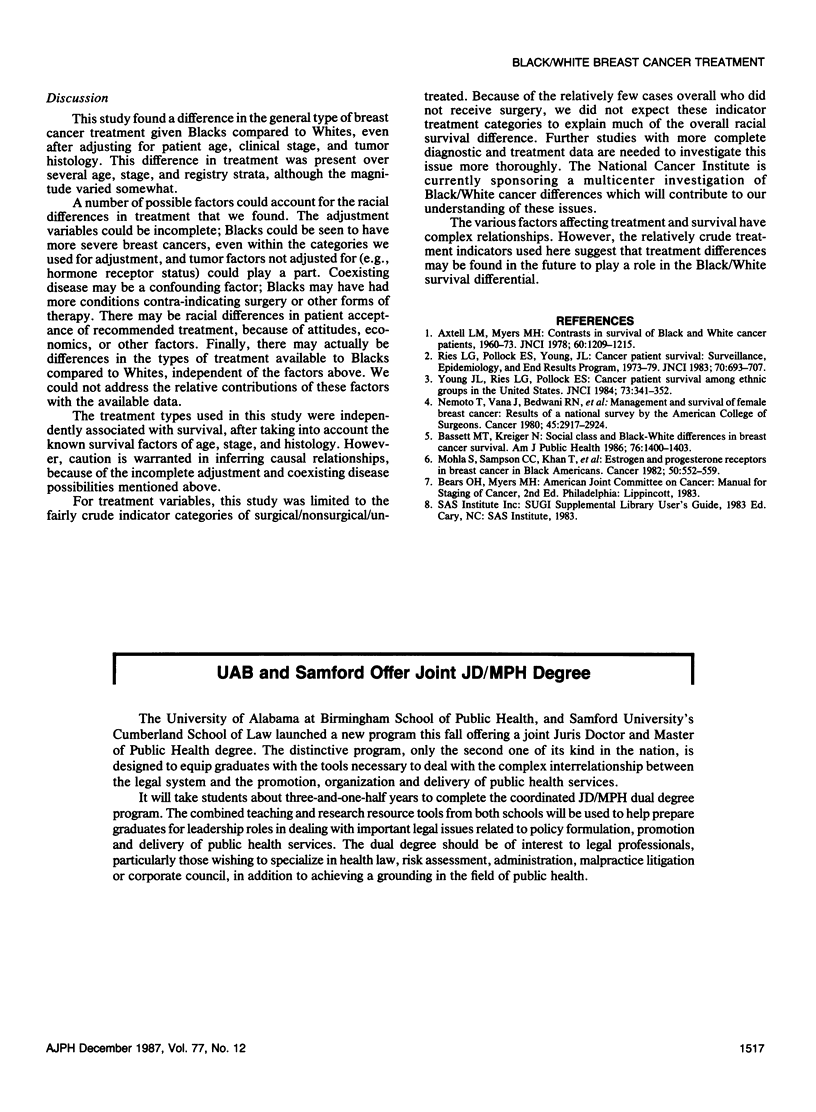Abstract
The relation between race, type of initial treatment, and survival with breast cancer were investigated using 36,905 cases reported to nine registries in the Surveillance, Epidemiology, and End Results (SEER) Program of the National Cancer Institute in the years 1978-82 and followed for survival through 1984. Using the crude treatment categories of surgical/nonsurgical/untreated, Blacks were found to have received less aggressive therapy. They were more likely than Whites to be treated nonsurgically (OR = 1.4; 95% CI = 1.2-1.7) or have no cancer-directed therapy (OR = 1.7; 95% CI = 1.3-2.3), even after adjusting by logistic regression for differences in age, stage, and histology. These treatment variables strongly affected five-year survival, after adjusting for age, stage, race, and histology. This finding of racial differences in survival-associated treatment patterns demonstrates the need to consider treatment variables in studies of race and cancer survival.
Full text
PDF


Selected References
These references are in PubMed. This may not be the complete list of references from this article.
- Axtell L. M., Myers M. H. Contrasts in survival of black and white cancer patients, 1960-73. J Natl Cancer Inst. 1978 Jun;60(6):1209–1215. doi: 10.1093/jnci/60.6.1209. [DOI] [PubMed] [Google Scholar]
- Bassett M. T., Krieger N. Social class and black-white differences in breast cancer survival. Am J Public Health. 1986 Dec;76(12):1400–1403. doi: 10.2105/ajph.76.12.1400. [DOI] [PMC free article] [PubMed] [Google Scholar]
- Mohla S., Sampson C. C., Khan T., Enterline J. P., Leffall L., Jr, White J. E. Estrogen and progesterone receptors in breast cancer in Black Americans: Correlation of receptor data with tumor differentiation. Cancer. 1982 Aug 1;50(3):552–559. doi: 10.1002/1097-0142(19820801)50:3<552::aid-cncr2820500328>3.0.co;2-g. [DOI] [PubMed] [Google Scholar]
- Nemoto T., Vana J., Bedwani R. N., Baker H. W., McGregor F. H., Murphy G. P. Management and survival of female breast cancer: results of a national survey by the American College of Surgeons. Cancer. 1980 Jun 15;45(12):2917–2924. doi: 10.1002/1097-0142(19800615)45:12<2917::aid-cncr2820451203>3.0.co;2-m. [DOI] [PubMed] [Google Scholar]
- Ries L. G., Pollack E. S., Young J. L., Jr Cancer patient survival: Surveillance, Epidemiology, and End Results Program, 1973-79. J Natl Cancer Inst. 1983 Apr;70(4):693–707. [PubMed] [Google Scholar]
- Young J. L., Jr, Ries L. G., Pollack E. S. Cancer patient survival among ethnic groups in the United States. J Natl Cancer Inst. 1984 Aug;73(2):341–352. doi: 10.1093/jnci/73.2.341. [DOI] [PubMed] [Google Scholar]


